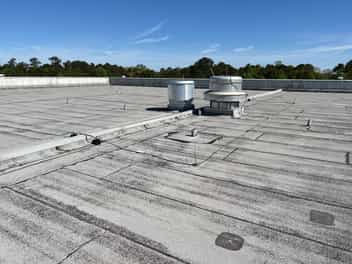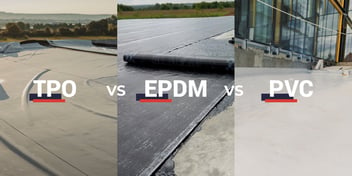- Home »
- Learningcenter »
- Epdm roofing material comparisons
EPDM Roofing Material: Cost, Comparisons, and Pros & Cons

If you are searching for a flat or low-slope roofing solution, you’ve likely come upon a number of acronyms over and over again: TPO, PVC, and EPDM.
In this post, we’re going to explore everything you need to know about ethylene propylene diene monomer (EPDM) rubber roofing material. Frequently referred to simply as a “rubber roof,” this membrane material is most commonly used on commercial buildings. In some cases, though, it will also be used on residential structures such as patio roofs and carports.
It is quick and easy to install because it is manufactured on large sheets or rolls, so EPDM is one of the most affordable roofing materials on the market. It’s also lightweight, has very few seams, and commonly has a 20 or more years lifespan when using a high-quality product.
Is EPDM roofing the right material for your building? How does it compare to some of the other popular options out there?
What Is EPDM Roofing Material?
Ethylene propylene diene monomer rubber (EPDM) is a type of synthetic rubber that is used in a wide variety of applications, including roofing membranes. This extremely durable single-ply material is commonly used for low-slope buildings in the US and around the world.
Originally introduced to the market about six decades ago, EPDM is still one of the most popular types of roofing systems for flat roofs. In the past, flat and low-slope roofs were typically covered using built-up roofing systems, which are prone to a number of issues, including sun damage and water intrusion.
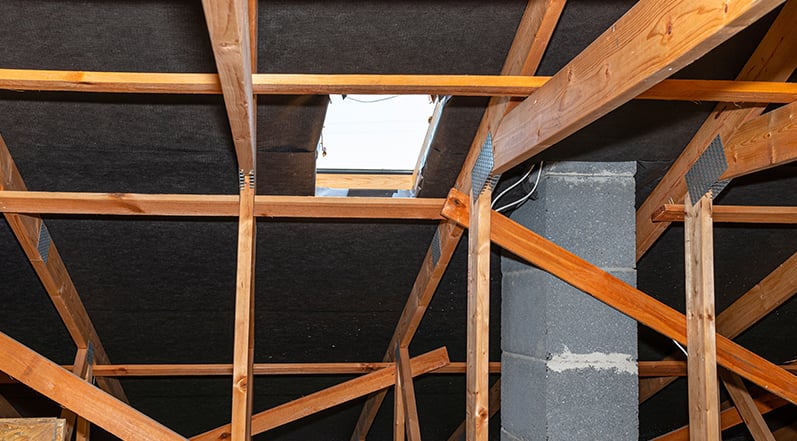
Single-ply roofing membranes emerged to try and solve some of the issues present with built-up roofing systems, and EPDM is one of the most popular, along with TPO and PVC.
Cost-effective, durable, and easy to install, there are a lot of reasons why EPDM is worth considering if you are re-roofing a flat or low-slope building.
How Much Does EPDM Cost?
There are a number of factors that can impact how much it costs to install an EPDM rubber roof, including:
- ● The size of the roof
- ● The cost of the labor
- ● The roof pitch and height
- ● The location
- ● The climate
- ● Roof penetrations (skylights, vents, architectural protrusions, A/C units, etc.)
- ● Insulation
- ● Thickness
- ● Accessibility
- ● Installation system (fully adhered, mechanically attached or ballasted)
- ● The removal of the old roof
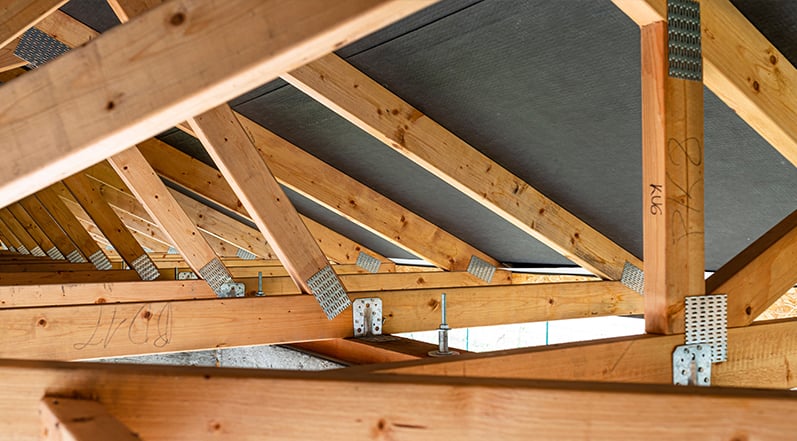
In general, though, EPDM typically costs between $4.25 and $14.50 per square foot, including both materials and labor.
How Does EPDM Compare to Other Flat Roof Materials?
Membrane roofing is one of the most popular options on the market for flat roofs, as these watertight materials can help protect structures from the elements and water intrusion. Many different materials can be used for this purpose, with the three most common types being thermoplastic, synthetic rubber, and modified bitumen.
EPDM roofing materials are synthetic rubber membranes– also known as thermoset membranes. Both TPO and PVC membranes are considered thermoplastic membranes, which can be reshaped using heat in a way that isn’t possible for thermoset membranes.

Modified bitumen membranes consist of premanufactured sheets that are made of asphalt and reinforcing layers. Though they have been on the market for more than half a century at this point, the industry has been moving away from this type of membrane system in favor of TPO, PVC, and EPDM.
The short story is that EPDM is an affordable option with a long lifespan, but it isn’t known for adding aesthetic value and can also be more prone to damage or mold and mildew building. TPO is also a low-cost option that is great at reflecting the rays of the sun away from a building, but it’s such a new product that many are concerned about its overall lifespan. Finally, PVC is a durable and strong material with a long lifespan, but it is also the most expensive.
TPO Vs. EPDM
Thermoplastic polyolefin (TPO) is a single-ply thermoplastic material that is becoming increasingly popular in flat roof applications. It can be even cheaper to install than EPDM in some cases, and some even claim that this material might even have a longer lifespan. That being said, TPO is a new material and therefore hasn’t truly been tested for longevity.
Others report that TPO roofing can form cracks about fifteen years after installation, increasing the risk of water intrusion and leaks. TPO roofs must be properly inspected and maintained; otherwise, it can significantly reduce their lifespan.

If energy efficiency is one of your primary concerns, you might be interested in looking into TPO or PVC rather than EPDM. While EPDM membranes are now available in lighter colors, the coating wears off over time. TPO and PVC in white or light gray colors are thought to provide superior energy efficiency in their ability to deflect the rays of the sun.
TPO is also known for being resistant to mold and mildew, which EPDM doesn’t perform nearly as well at.
PVC Vs. EPDM
Polyvinyl chloride (PVC) roofing membranes are another type of thermoplastic membrane. Able to withstand extreme weather events and incredibly durable, PVC is more expensive than TPO and EPDM.
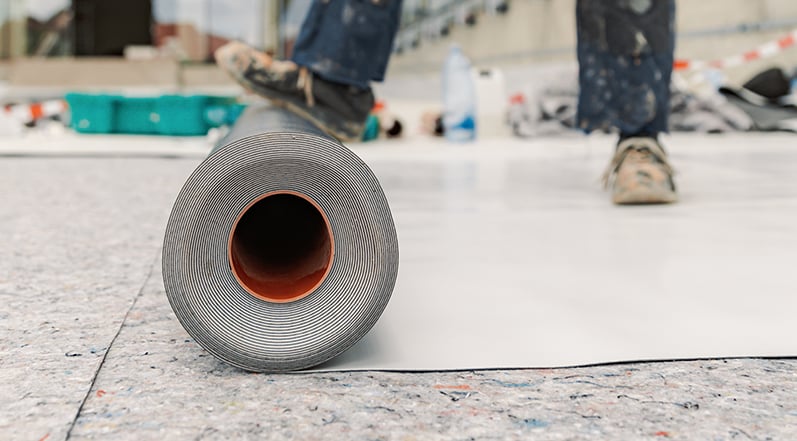
PVC is known for being very strong, puncture resistant, and resistant to chemicals and fires. If chemical exposure is a concern, you might consider looking into PVC. It also has a lifespan comparable to EPDM– they often last more than twenty years.
On the other hand, PVC does not perform particularly well in cold climates. EPDM is known for remaining pliable and flexible in extremely cold temperatures, while PVC has a tendency to become brittle and crack when temperatures drop.
Modified Bitumen Vs. EPDM
Though modified bitumen roofs aren’t nearly as popular as they used to be, they do offer some advantages. Requiring very little maintenance and typically one of the most affordable flat roofing options in terms of the material cost, this material is installed in at least two layers in a way that provides a thicker layer of protection than single-ply systems.
This can be a good choice in high-traffic areas because it is multilayered and thicker than other options. It can also be very easy to work with in tight spaces compared to the large rolls of thermoplastic materials, so individuals that are looking to re-roof in a dense city or other tight space might be interested in this option.
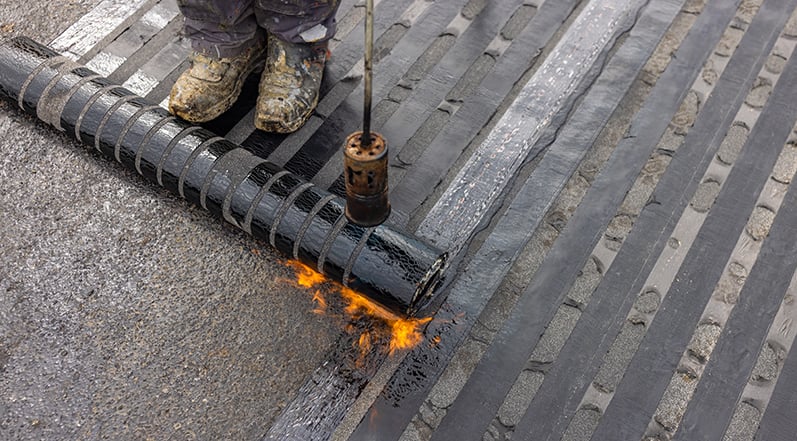
On the other hand, modified bitumen roofs tend to absorb heat in the summer and involve a much more complex installation process. The price can also start to climb depending on how many layers of material are being installed.
The Pros of EPDM
EPDM is popular for a number of reasons, including the fact that it generally comes in at the lowest price point for low-sloped or flat roofs per square foot. It also has an impressive lifespan, often lasting more than twenty years.
Cost-Effective
The installation cost of EPDM is typically less than that of TPO and PVC, not including the material. Installation for EPDM usually runs around $5.50 per square foot, while TPO and EPDM carry an installation cost of roughly $7.00 and $8.50 per square foot, respectively.
One of the reasons that EPDM is cheaper to install than other types of roofs is that the sheets of the membrane are long and wide. This means that there are fewer seams to deal with, and professional roofing crews can move more quickly.
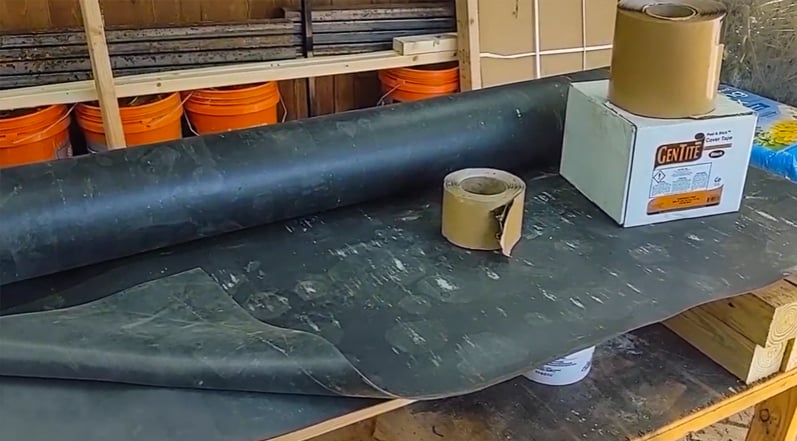
Beyond that, EPDM is very lightweight, meaning that the roof decking typically won’t require reinforcement.
It’s worth noting, however, that the method of installation will have an influence on the price. Ballasted EPDM systems are going to be the least expensive, but mechanical systems or fully adhered systems can end up costing a bit more than TPO.
Durability
One of the great things about EPDM is that it can expand and contract in response to thermal changes.

This means that it can withstand temperature fluctuations without cracking or otherwise becoming compromised.
Protection From the Elements
EPDM is a great material to protect your building from wind, hail, rain, and sunlight.

As temperatures fluctuate, this roofing material can expand and contrast in order to resist damage.
Lifespan
EPDM roof installations typically last between 25 and 30 years.
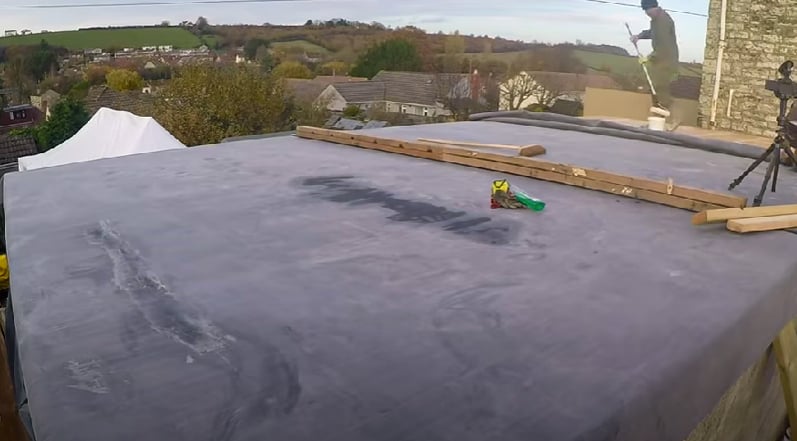
In the meanwhile, repairs are typically fairly inexpensive compared to other options.
Energy Efficiency
If you purchase EPDM membranes in white, they can help to reflect the rays of the sun that would otherwise be heating up your building in the summer. This product is also energy efficient thanks to the ease with which it can be paired with polyiso insulation.
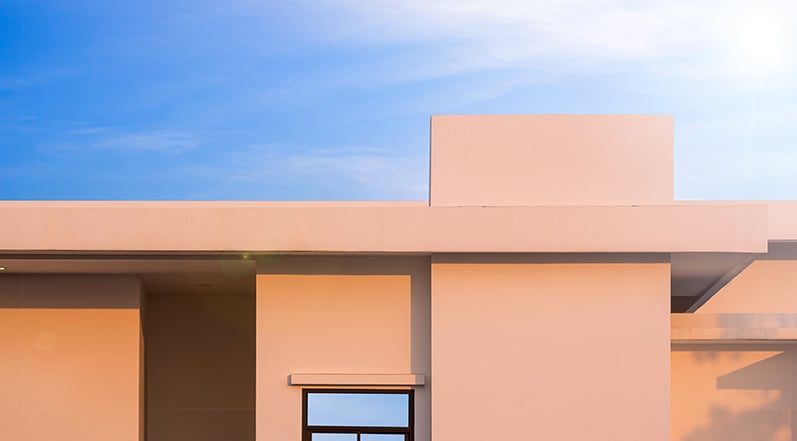
Typically, though, it isn’t considered quite as energy efficient as TPO and PVC.
Easy Installation

EPDM roofs are some of the simplest roofing membranes to install.
Puncture Resistance
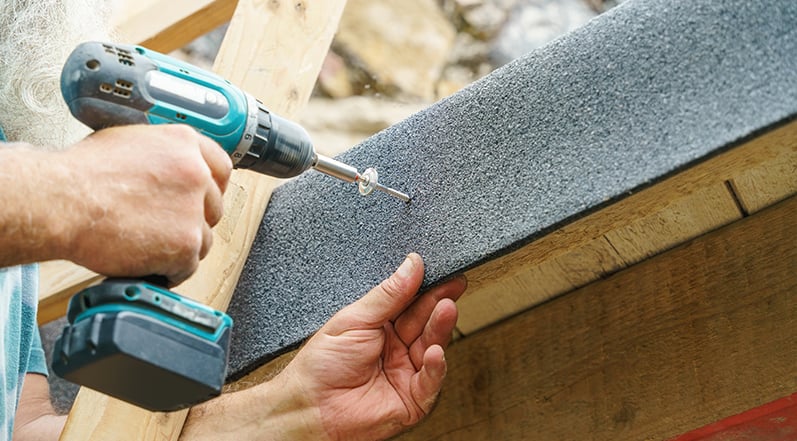
Doesn’t Pollute Run-Off Water
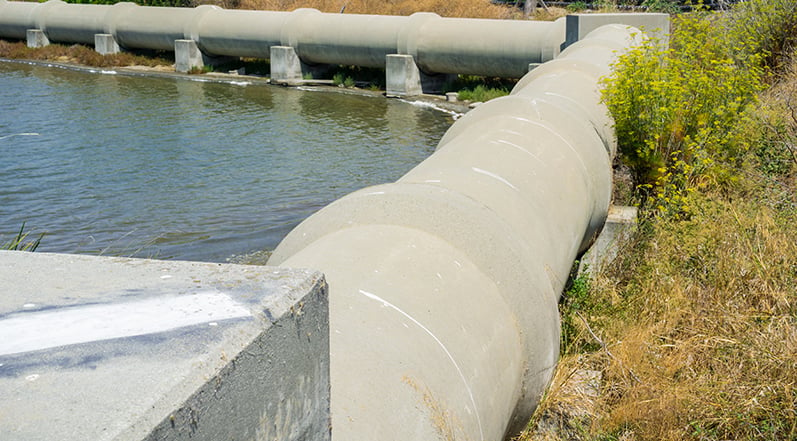
The Cons of EPDM
While EPDM is a durable and affordable material, it does have its downsides. Near the end of its life or in the wrong environment, EPDM can be fragile. Beyond that, not everyone finds EPDM to be an aesthetically appealing roofing option compared to other available materials.
Not Quite as Energy Efficient as TPO and PVC
If you’re familiar with EPDM roofs, you likely think of them as being a dark black color. While this is the most common type of EPDM membrane, there are lighter color options to help reflect the UV rays of the sun and help keep cooling costs down in the summer.
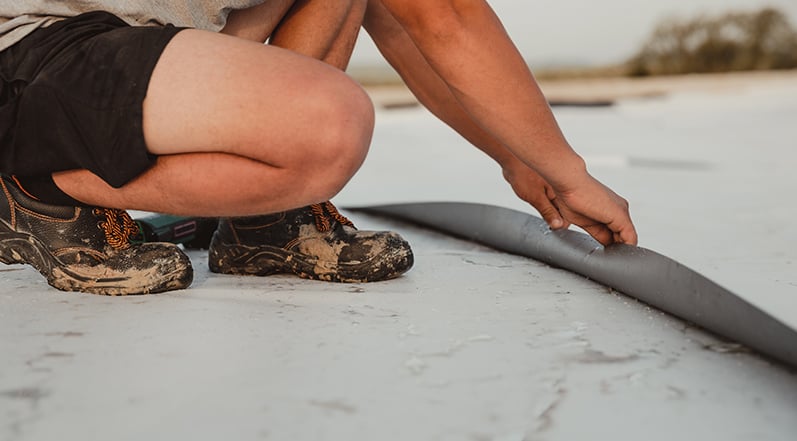
This can be a big help if you’re interested in an EPDM roof in a hot climate. However, it’s worth understanding that the coating does wear off over time, meaning that its efficacy in deflecting the sun’s rays will reduce over time. Purchasing a white-colored EPDM roof is typically more expensive than the standard black color.
If you decide to go with a black EPDM roof, it can absorb heat from the sun in a way that heats your building and decreases the material’s energy efficiency.
Shrinkage
An old and poorly maintained EPDM roof can end up shrinking over time due to exposure to direct sunlight. This means that the flashings can be pulled away from the sides of the building and result in cracks and splits on the surface of the material.
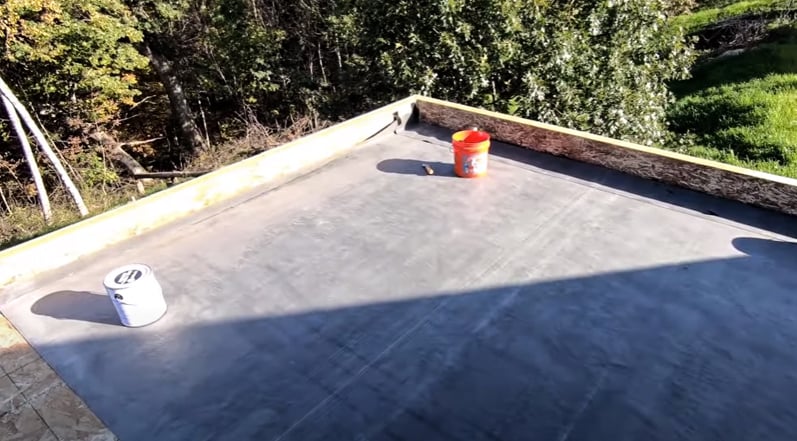
Eventually, this can lead to water intrusion and leaking. This can also occur if the roof was improperly installed.
Water Ponding
Avoiding water ponding is essential to any low-slope or flat roof system. With EPDM rubber, water ponding can begin to occur as the building shifts over time and ever-so-slightly adjusts the structure of the roof.

When an EPDM rubber roof is installed properly, it should be able to withstand pooling water without absorbing any of the moisture. That being said, it’s always important to drain any ponding water as soon as possible and find a solution to ensure proper drainage.
Limited Color Options
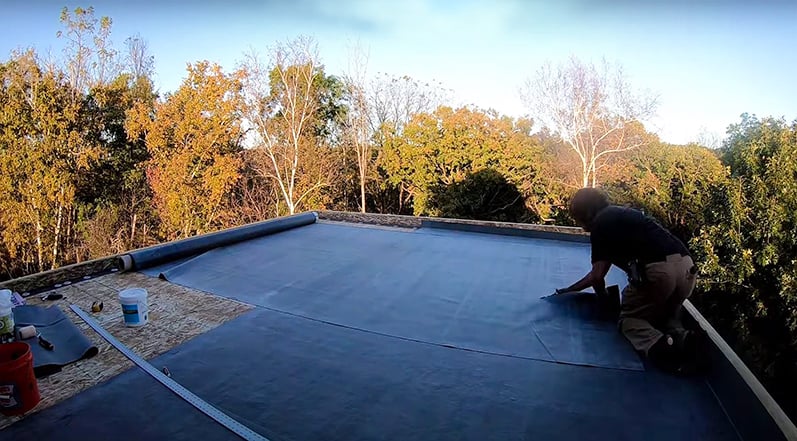
Doesn’t Do Well With Higher Temperature Climates

Aesthetics
Not everyone loves the look of a flat black EPDM roof.
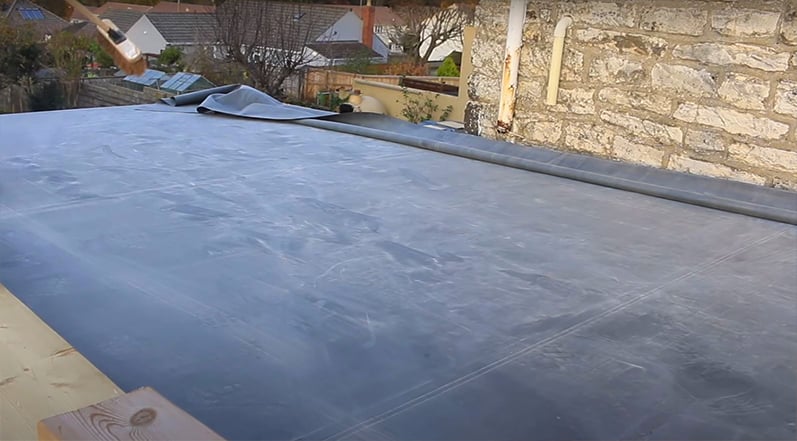
If you’re concerned about aesthetics as one of your higher priorities, EPDM might not be your first choice.
What Type of Building Is a Good Candidate For an EPDM Roof?
Buildings with low slope are good candidates for EPDM roofing systems.
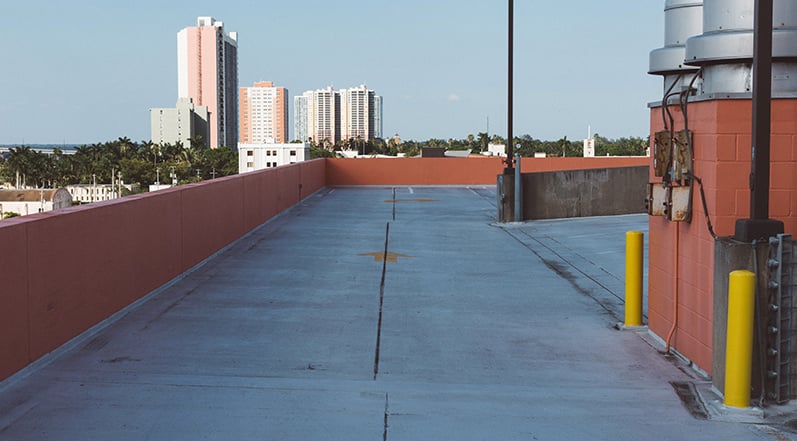
In an ideal situation, there also wouldn’t be any nearby trees that could impact your roof, as susceptibility to puncture damage is one of the downsides of EPDM roofing.
Is It Time For a New Roof?
If you’re in the Atlanta area and you need to have your flat or low-slope roof replaced, Colony Roofers can help. We specialize in offering the highest quality roofing systems for the most affordable prices and pride ourselves in offering the best customer service possible to all of our clients.

When you decide to replace your roof, it’s easy to feel overwhelmed by questions regarding materials, cost, lifespan, and more. We would be more than happy to come out and take a look at your structure to discuss the best possible options in your situation and offer an estimate for a roof replacement.
Hiring a professional, experienced roofing contractor is essential when replacing your flat or low-slope roofing system. The only way that you can know with certainty that your new roof will protect your building from the elements is to have confidence that it was installed properly. If you’re ready to give your structure the protection it deserves for decades to come, contact us today.
 Call (678) 365-3138
Call (678) 365-3138

